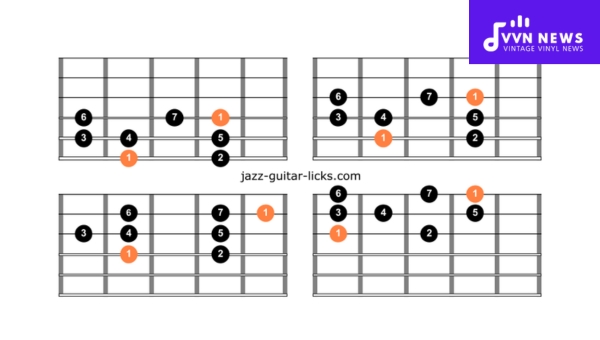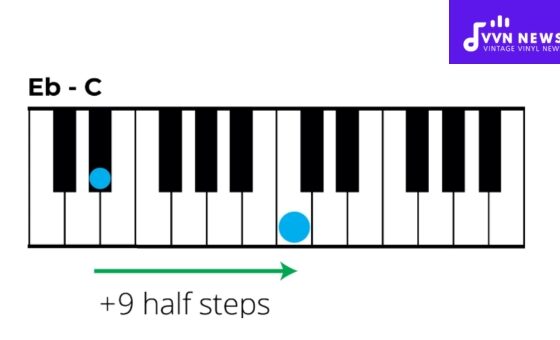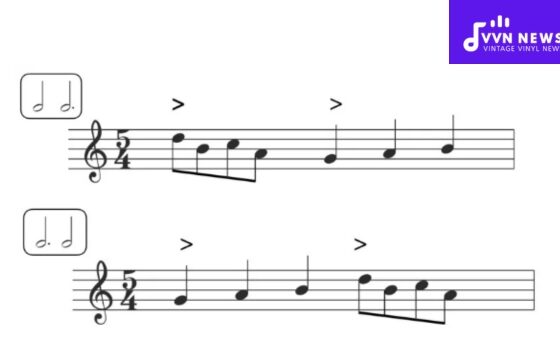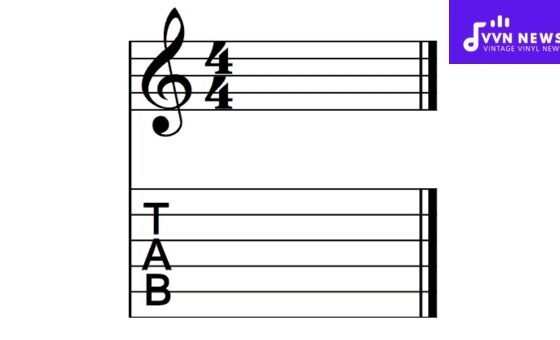If you’ve ever dipped your toes into the vast ocean of music and its theory, you might have stumbled across the Ionian mode. Unique in its structure and sound, the Ionian mode can be a valuable asset to any musician seeking to expand their musical knowledge and creativity.
Taking a journey through this terrain of music theory can lead to new sonic discoveries and unveil previously hidden aspects of your favorite songs or compositions.
The Ionian mode is no stranger to music across various genres – being ingrained in everything from classical symphonies to modern pop masterpieces.
And the beauty of it all is that everyone – professionals, budding musicians, or enthusiastic listeners – has access to this musical treasure trove.
This deep dive isn’t just for those seeking advanced concepts; it’s an exposure meant for anyone with a passion for the intricacies that go into creating beautiful auditory experiences.
What’s the Definition of Musical Modes?
Musical modes are essentially “scales” or specific sequences of whole and half steps between notes, which create unique tonal platforms.
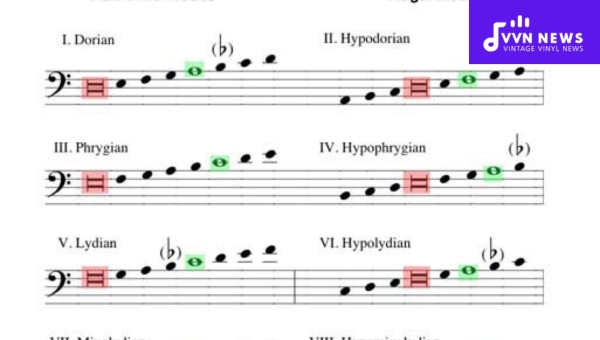
These platforms form the foundation for melodies, harmonies, and chords in our music.
Hailing from ancient Greek music theory, modes have long been a cornerstone of Western music.
There are seven main modes in modern musical theory – Ionian, Dorian, Phrygian, Lydian, Mixolydian, Aeolian, and Locrian – each with their distinct characteristics.
The notes in these modes follow a set pattern of intervals or ‘steps’. The Ionian mode, which we’re focusing on today, corresponds to the major scale that most of us are familiar with.
Also Read: Dorian Mode [Major Scale’s Lesser-Known Sibling Explained]
What is the Ionian Mode?
The Ionian mode is essentially what we commonly refer to as the major scale. Its structure is a pattern of whole and half steps that gives it its distinct melodic quality.
This pattern goes as follows: whole-whole-half-whole-whole-whole-half. If you were to play the C major scale, for instance, you would be playing in the Ionian mode.
Recognizing this mode can give musicians a deeper insight into their compositions, allowing them to manipulate moods and elicit specific reactions from their listeners.
It might be a simple concept initially, but when used strategically, it can powerfully enhance your songwriting skills.
Difference between Ionian Mode and Major Scale
The Ionian model and the Major scale are often mistakenly assumed to be identical; they share similar traits but distinct differences set them apart.
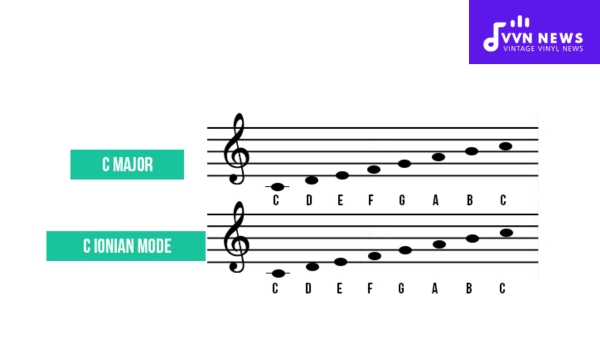
- Starting point: The Ionian mode begins from the root note whereas the Major scale starts on the tonic note, which is located right next to it.
- Intervallic Structure: While both share nearly identical arrangements, the half-step intervals in a major scale occur between the 3rd-4th and 7th-8th degrees, while in an Ionian mode, these half-steps fall between 4th-5th and 7th-8th degrees.
- Tonal Center: A major scale resolves to a chord that corresponds with its root note, while an Ionian mode resolves around notes that form an Ionian chord.
- Chord Progressions: In major scales, harmonization produces vii° for the seventh degree while in Ionian modes it’s more flexible with a lot of harmonic freedom.
- Usage in Compositions: The Major scale is heavily utilized in various music genres including pop, classical, and rock. On the other hand, the Ionian mode is primarily used in jazz improvisations and some niche ethnic music compositions.
In essence, both are essential tools in a musician’s toolkit imparting them rich possibilities for creating varied musical expressions.
The Ionian Mode on Piano and Guitar
Playing the Ionian mode, in essence, focuses on constructing a musical sequence starting from the first note of a diatonic scale (which can also be perceived as a major scale).
This unique arrangement of half and whole steps provides our ears with that distinctive ‘Ionian’ sound.
To play the Ionian mode on a piano:
- Finding Your Root Note: Before you let your fingers dance across the piano keys, initially establish your root note (the ‘home’ or start point for your sequence). Aiming to keep things straightforward, let’s select the
Cas our root note to avoid any accidental sharps or flats. - Follow The Steps: Ascending from
C, follow a sequence of whole, whole, half, whole, whole, whole, and half steps. This equates to a progression similar to C – D – E – F – G – A – B – C in the Ionian mode. - Repeat As Needed: Covering all keys could seem daunting at first glance, but all major scales follow this identical step pattern. It’s about transposing this pattern across various root notes.
Conquering the Ionian mode on guitar:
- Determine Your Root Note: Like the piano application, pick your root note on the guitar. This can be anywhere along your fretboard.
- Forming Your Scale Pattern: Based upon Western music theory traditions, we’ll build from an ‘E’. Start with your open sixth string (‘E’) and follow these steps: whole step (two frets up) to ‘F#’, another whole step move to ‘G#’, make a half step up to reach ‘A,’ continue with another whole step move will carry you to ‘B,’ another one leads to ‘C#,’ one more after that arrives at ‘D#,’ and finally, a half step will lead back to your original ‘E’.
- Apply Across the Fretboard: Once you’re comfortable with this shape, apply it starting at any point on your 6th string. This moveable pattern is essentially an Ionian mode scale that can be transposed anywhere on the fretboard.
With a bit of time, practice, and dedication, the Ionian mode can give you a fresh perspective on melody creation and grant you deeper insights into how melodies are built.
By incorporating the Ionian mode into your musical repertoire, you’re not just learning a new way to play; you’re broadening your musical vocabulary.
Also Read: Mixolydian Mode [Add Depth & Richness To Your Music Today]
Key Degrees of the Ionian Mode
When dissecting the Ionian mode, you’ll notice seven crucial degrees that construct its foundation.
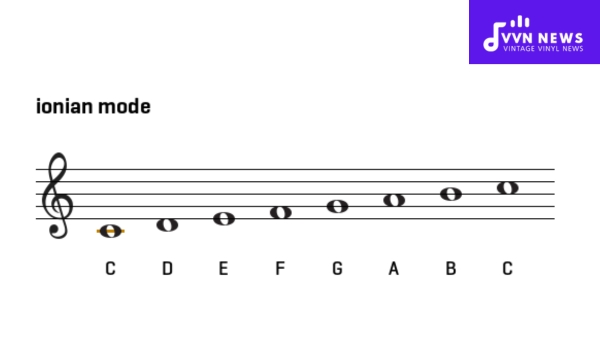
These key degrees play an essential role in defining the Ionian mode’s unique disposition as a prevalent major scale.
Let’s break down these significant musical building blocks.
- Root: This is the starting point of the scale and contributes to defining its tonality.
- Major Second: The second degree of the scale, it is typically two half steps above the root.
- Major Third: Four half steps higher than the root, this degree adds a positive, ‘happy’ characteristic often associated with major scales.
- Perfect Fourth: Five half steps above the root, it serves as a stable note within the scale.
- Perfect Fifth: Often used in chords with root and third, this note stands seven half steps above from root degree.
- Major Sixth: This note adds color to your melody or harmony due to its nine-half-step distance from our reference point.
- Major Seventh: Twelve half-steps away from our starting point (root), it gives that leading-tone push towards resolving back on that beginning note.
When playing around with these degrees in your melody or harmonic constructs, you soon realize these steps aren’t merely numbers – they symbolize specific sounds or moods integral to crafting your musical masterpiece.
Examples of Famous Pieces In Ionian Mode
If you’ve ever tapped your feet to catchy tunes or swayed to the rhythm of a touching ballad, you’ve likely encountered music laced with the Ionian mode.
This versatile mode doesn’t stop at any genre or period; it’s omnipresent and timeless.
1. “Let It Be” by The Beatles
A paradisiacal example of the Ionian mode is “Let It Be” by The Beatles, enriched in the key of C major (the equivalent Ionian account).
Despite its seemingly simple structure, it is packed with emotional depth and complexity that’s distinctive to this iconic band.
2. “No Woman No Cry” by Bob Marley
Venture from pop-rock history into the domain of reggae, and you’ll find Bob Marley’s classic “No Woman No Cry”.
The melody emanates in C major giving it a quintessential taste of the Ionian mode justifying its global fame.
3. J.S. Bach’s “Jesus Joy Of Man’s Desiring”
This renowned piece from J.S. Bach employs the G Major scale throughout most parts manifesting profound usage of the Ionian mode, serving as a prominent example in classical music repertoire.
4. “Don’t Stop Believin'” by Journey
This well-known anthem rocks itself out predominantly in E Major scale firmly etching an impression in our sonic memory banks as an epitome for rock tunes augmented with Ionian mode sensibilities.
5. “Hey Jude” by The Beatles
Another lasting monument of The Beatles’ brilliance, “Hey Jude”, streams with a splendid use of the Ionian mode adding another feather in their cap for employing this mode in crafting immortal tunes.
Each exemplary piece emphasizes that the brilliance of the Ionian mode lies not just in its sound structure but also in how it is utilized in breathing life into some of the world’s favorite melodies.
Its universal appeal crosses genres and decades, validating its importance squarely as a musical mainstay for all times.
Chord Progressions for Ionian Mode
Exploring the world of chord progressions in the Ionian mode is like unearthing hidden treasures.
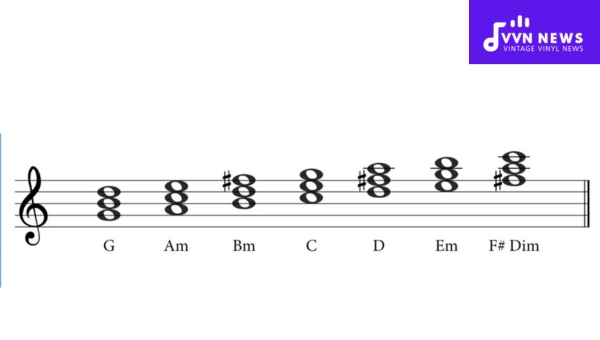
Each progression can be carefully cultivated to shape your music’s sound and storytelling ability.
With such a range of possibilities, it’s no wonder that musicians across the globe regard these progressions as an invaluable tool.
Common Chord Progressions
Knowing which chords work well together in the Ionian mode can enhance your music tremendously.
Two particularly common chord progressions are:
- I – IV – V (or 1 – 4 – 5) progression: A staple in many genres, this progression is often found in blues and early rock ‘n’ roll. It offers a sense of resolution and satisfaction that’s instantly gratifying for listeners.
- I – vi – ii – V (or 1-6-2-5) progression: Known as the
turnaroundprogression, this sequence creates a cyclical feeling, smoothing out transitions between sections while providing an engaging harmonic journey.
Harmonizing with Ionian Mode
To craft harmonies that complement the Ionian mode, it might be beneficial to familiarize yourself with some commonly used chords associated with each scale degree.
By following these ground rules, you have a solid foundation to create your own captivating Ionian mode chord progressions.
Also Read: Musical Modes Guide: Basics, Types, and Characteristics
FAQs
What is the Ionian mode in music theory?
The Ionian mode is a musical mode or scale represented by the natural diatonic scale, also known as the major scale.
How does the Ionian mode differentiate from other modes?
Ionian Mode is unique in being the only major mode among the seven musical modes, creating a euphoric sound that other modes can’t replicate.
Is it possible to play the Ionian Mode on any instrument?
You can employ the Ionian Mode on any instrument capable of playing multiple pitches, including but not limited to keyboards, guitars, and wind instruments.
Can you name a well-known song composed in Ionian Mode?
Yes, “Sweet Home Alabama” by Lynyrd Skynyrd is a renowned song composed predominantly in the Ionian Mode”
What is a standout characteristic of Ionian Mode?
One of its distinctive identifiers is that it starts and finishes on the same note, creating a loop that lends itself well to cyclical compositions and song structures.
Conclusion
The Ionian mode is a potent tool in any musician’s repertoire. Its unique properties lend it versatility and depth across various musical genres.
Delving into Ionian mode may feel like a challenging task, but with time and consistent practice, you’ll see its beauty unfurling in an array of compositions you conjure.
The key to mastering this or any music theory lies in its structures thoroughly. Lastly, remember to explore and experiment – music is an adventure that rewards the curious and the persistent.
